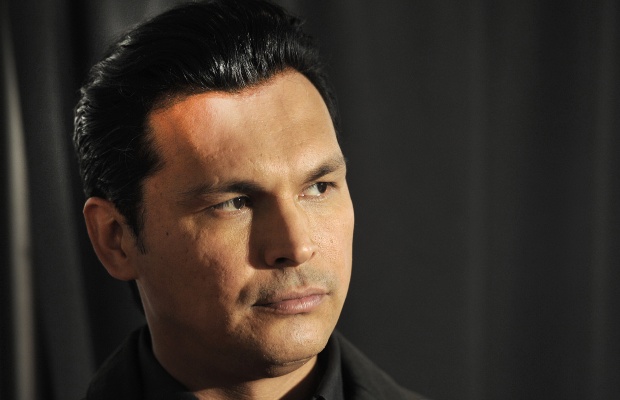Source: Indian Country Today Media Network
After being all but wiped out by European settlers in the 1800s, the American buffalo is finally getting its due recognition: November 2 marks the first official National Bison Day, established by a rare bipartisan Senate vote on October 30.
The effort to give the bison its day brought American Indians together with bison producers, conservationists, educational institutions, recreationists, zoological institutions, health organizations and businesses, notes the Wildlife Conservation Society. They formed a consortium, the Vote Bison Coalition, that worked to pass the resolution introduced on September 24 by U.S. Senators Tim Johnson (D-South Dakota) and Michael Enzi (R-Wyoming).
“National Bison Day is an opportunity to celebrate the bison as a living symbol of the United States,” Johnson said in a statement at the time. “Bison not only play a central role in Native American culture, they are increasingly important in South Dakota and across the nation as bison ranching and interest in this great mammal have grown.”
While various conservation and tribal groups have celebrated a National Bison Day informally int he past, this is its first time with an official federal designation. The day will fall on the first Saturday of November from now on.
The resolution is framed around the value of bison to tribes for spiritual and material sustenance, as well as giving a nod to modern-day capitalism with an allusion to the animal’s “significant economic value for private producers and rural communities,” and to its environmental importance by mentioning that it can play a “role in improving the types of grasses found in landscapes to the benefit of grasslands.” In fact there is something for everyone, even sports teams, as the animal’s symbolic use as a mascot also factors in.
RELATED: Bison, Givers of Life: Lakota Women Speak
The sad history of the buffalo in the wake of European colonization has been well documented. When European settlers wanted the land, they drove off the Indigenous Peoples’ main source of food, the bison. In the process they massacred millions of the majestic animals during the Plains Indian Wars, driving them almost to extinction.
RELATED: Genocide by Other Means: U.S. Army Slaughtered Buffalo in Plains Indian Wars
Over the past few years, bison have slowly been reintroduced to their original lands, including the Fort Peck and Fort Belknap Indian reservations.
RELATED: Genetically Pure Bison Returned to Fort Belknap After a Century Away
Bison Return to Fort Peck: A Special Day, 200 Years in the Making
Below, the resolution in full.
Senate Resolution Designating November 2, 2013, as “National Bison Day”
Whereas bison are considered a historical symbol of the United States;
Whereas bison were integrally linked with the economic and spiritual lives of many Indian tribes through trade and sacred ceremonies;
Whereas there are more than 60 Indian tribes participating in the Intertribal Buffalo Council;
Whereas numerous members of Indian tribes are involved in bison restoration on tribal land;
Whereas members of Indian tribes have a combined herd on more than 1,000,000 acres of tribal land;
Whereas the Intertribal Buffalo Council is a tribal organization incorporated pursuant to section 17 of the Act of June 18, 1934 (commonly known as ‘‘Indian Reorganization Act’’) (25 U.S.C. 477);
Whereas bison can play an important role in improving the types of grasses found in landscapes to the benefit of grasslands;
Whereas a bison has been depicted on the official seal of the Department of the Interior since 1912;
Whereas bison hold significant economic value for private producers and rural communities;
Whereas, as of 2007, the United States had 4,499 bison producers creating jobs and providing a sustainable and healthy meat source contributing to the food security of the United States;
Whereas a bison is portrayed on 2 State flags;
Whereas the bison has been adopted by 3 States as the official mammal or animal of those States;
Whereas the buffalo nickel played an important role in modernizing the currency of the United States;
Whereas several sports teams have the bison as a mascot, which highlights the iconic significance of bison in the United States;
Whereas on December 8, 1905, William Hornaday, Theodore Roosevelt, and others formed the American Bison Society in response to the near extinction of bison in the United States;
Whereas on October 11, 1907, the American Bison Society sent 15 bison to the first big game refuge in the United States, which was known as the ‘‘Wichita Reserve Bison Refuge’’;
Whereas in 2005, the American Bison Society was reestablished, bringing together bison ranchers, managers from Indian tribes, Federal and State agencies, conservation organizations, and natural and social scientists from the United States, Canada, and Mexico to create a vision for the North American bison in the 21st century;
Whereas there are bison herds in National Wildlife Refuges and National Parks;
Whereas there are bison in State-managed herds across 11 States;
Whereas there is a growing effort to celebrate and officially recognize the historical, cultural, and economic significance of the North American bison to the heritage of the United States; and
Whereas members of Indian tribes, bison producers, conservationists, sportsmen, educators, and other public and private partners have participated in the first annual National Bison Day on November 1, 2012, and are committed to continuing this tradition annually on the first Saturday of November: Now, therefore, be it
Resolved, That the Senate—
(1) designates November 2, 2013, the first Saturday of November, as National Bison Day; and
(2) encourages the people of the United States to observe the day with appropriate ceremonies and activities.
Read more at http://indiancountrytodaymedianetwork.com/2013/11/02/happy-first-national-bison-day-rare-bipartisan-achievement-152050













